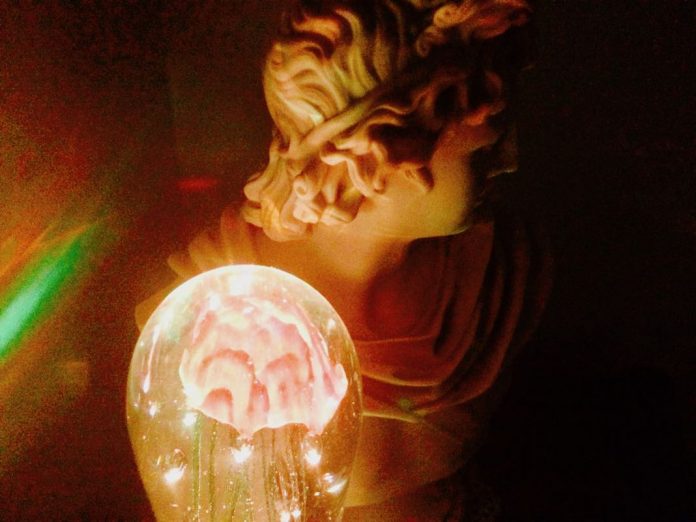The Olympic Games
The Olympic Games were held every four years at Olympia, in special honour of Zeus. When these Olympics were held in ancient Hellenic times, a flame burned on the Altar of Prytaneion in Olympia. The modern Olympic Flame Lighting Ceremony is a thoughtful way of linking the modern Olympic Games to the ancient Olympics, and therefore to the Greek Gods.
The ancient Olympics ran from 776 Alpha (BC) to 394 Omega (AC), indicates there were possibly around 293 consecutive Olympic festivals, before all Pagan events were eventually banned by the Christians.
Interestingly, the word pagan is derived as follows:
Collins Dictionary & Thesaurus of the English Language (Fifth Edition 2011):
Word origin Church Latin paganus civilian (hence not a soldier of Christ)
The word pagan is generally used as an insult to try and demean other Gods (especially the Greek Gods) and their followers, but when you think about it, the word is extremely positive. Basically, if you’re not a soldier or a supporter of Christ, then you’ve got some good pagan bonds.
Pagan festivals with all those fit naked bodies running around had to seriously offend a few people at one point in time. Worship of more than one God turned out to be the last straw.
After the Olympics were banned, it would take more than 1500 years, including 500 years of Dark Ages, where no one really knows what the hell happened, to get the Olympic Games back again.
Ancient Olympic Champions
Contest winners at the ancient Olympics received an olive wreath if they came first in their contest.
In Greek mythology, Nike, Goddess of Victory, gifted winners with a wreath and sash.
The winner’s home city-state provided further honours and gifts to their champion. This could include a statue, an ode by a famous poet, money, tax breaks, a lifetime pension, front row seats at the theatre, or even the affection of beautiful women.
The Modern Olympic Flame Lighting Ceremony
The flame at the modern Olympic Games is thought to have been first lit at the 1928 Olympic Games in Amsterdam. The flame wasn’t brought from Greece though.
The Flame Lighting Ceremony at the ancient site of Olympia in Greece and the Olympic torch relay bringing the flame to each host nation, first started in 1936 for the Summer Olympics in Berlin, Germany.
Hitler’s Third Reich organised it as a grand way of opening the Berlin Olympic Games.
Theories on why they wanted to do this have included wanting to link the Nazis with ancient Greece in some honourable way, or even as a way of linking the Aryan super race as the true descendants of the Spartans. Or was Hitler trying to obtain favour from Zeus? Whatever the case, it was one big propaganda exercise.
Just as Prometheus stole fire from Zeus, the Nazis took fire from Greece and unwittingly started a new Flame Lighting Ceremony craze.
The blonde headed runner who brought the flame into the German stadium in 1936 was a member of the master race, according to the Nazis. The spectacle would have been dazzling, especially with a flame from Greece burning inside the huge bronze cauldron raised up high, inside the stadium.
The downer for the Third Reich during the Berlin Olympic Games would have been the four gold medals won by non-white athlete Jesse Owens. Hitler would have had one big headache after that. I wonder how the Nazis explained that accomplishment away.
Incredibly, from there the Flame Lighting Ceremony has become a modern Olympic tradition.
Today, lighting the flame at the original source in Ancient Olympia, symbolically passes the blessing (we hope) of the Greek Gods to every host country.
At the very least, the beautiful women who partake in the Flame Lighting Ceremony at Olympia, would surely please the Greek Gods and Goddesses.
The Olympian Gods are called
Lighting the flame starts at the Temple of Hera (Heraion), which is located opposite to the Temple of Zeus.
The flame Lighting Ceremony is normally performed several months before the commencement of the Olympic Games. For instance in Rio de Janeiro, the cauldron in Rio’s Olympic Stadium was ignited on August the 5th from a flame ignited in Olympia, back in April. The Olympic flame crossed the ocean in a lamp. Over 12,000 different runners carried it before the cauldron was lit in Olympic stadium. It remained lit until the closing ceremony.
The Flame Lighting Ceremony has the High Priestess and the Vestal Virgin priestesses surrounding the Altar of Hera.
The High Priestess calls on Apollo, the Sun God, to light the torch.
She uses a concave mirror to focus the sun’s rays and then says a prayer to Apollo and Zeus.
Prayers to Apollo and Zeus:
The Prayer for Sydney 2000
“Apollo, god of the sun and the idea of the light, send your rays and light this holy torch for the hospitable city of Sydney.”
“Oh Apollo, god of the divine sun and idea of light you have sent your rays and the sacred torch was lit. Now you, god Zeus, bless all the peoples of the world with peace and crown those who have mastered the sacred contest.”
The Prayer for Rio de Janeiro 2016
“Let the sky, the earth, the sea and the winds sound, mountains fall silent, sounds and birdsong cease.”
“Apollo, king of the sun and light, send your rays and light the sacred torch for the hospitable city of Rio de Janeiro, and you Zeus give peace to all peoples on earth and wreath the winners of the sacred race.”
When the Flame appears
Once the flame appears, the High Priestess relays the Olympic flame in a small parabolic bowl and takes it to a stadium with all of the priestesses in procession.
They pass by the Olive Tree, the sacred symbol of the Goddess Athena. They stand there for a moment while a young boy cuts off an olive branch. This olive branch symbolises peace and it’s a way of linking the olive-wreath winners of ancient times to the winners of the modern Olympic Games.
Olympic Torch Relay
At the stadium, the High Priestess lights the torch for the first runner and the torch relay starts honourably from there.
The Olympic flame passes from person to person, torch to torch, and eventually makes its way to the host country’s Olympic stadium.
The Olympic flame is usually carried by runners, but other interesting methods of transportation have also been used. These include boats, planes and many other modes of transport.
In 2000, it travelled by camel across the Australian desert. It even made its way underwater by diver chaperones at the Great Barrier Reef.
The most bizarre form of flame travel occurred in 1976 when the Olympic flame was converted into a radio signal. This signal was sent from Athens to Canada via satellite, where it triggered a laser beam which relighted the flame for the Montreal Olympic Games.
What happens if the Olympic Flame extinguishes?
The International Olympic Committee (IOC) has a protocol in place to solve this problem if the flame does extinguish by having multiple copies of the flame. Copies of the flame are transported with the torch relay procession in a car for example. It can also be located at a backup location.
The Olympic Flame has been known to extinguish because of torch malfunctions, and weather conditions because of wind and rain. Protestors have also snuffed out the flame.
Protestors have thrown water at the Olympic flame and they’ve even used a fire extinguisher to put it out. Some of them obviously have no respect for the Greek Gods.
What’s all the fuss about? What do all Olympic athletes want to win?
An Olympic Gold Medal of course.
Interestingly, medals predominately show Nike, the Goddess of Victory, on the front of Olympic medals. Never forget, the Olympics Games are eternally linked with the Greek Gods and Goddesses.
Olympic Medal Facts
Athens 1896 – Winners of the first modern Olympics held in 1896 in Athens, Greece, won a silver medal instead of a gold medal, while runner’s up received a copper medal. Zeus can be seen holding Nike on the front of the medal. The Acropolis is shown on the back.
Paris 1900 – Gold, silver and bronze medals were awarded for the first time in Paris. Instead of the normal circular medal, they were rectangular in form, showing Nike on the front and a victorious athlete on the back.
Munich 1972 – The medal showed Castor and Pollux, the twin mythological sons who had two different fathers, Spartan king Tyndareus and Zeus.
Athens 2004 – Nike is shown flying into the 1896 Panathenaic Stadium bestowing the winners. On the back of the medal under the Athens logo is the Olympic Ode written in Greek.
Oh mighty Zeus and Apollo,
Supreme Respect





